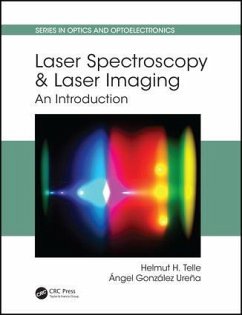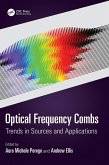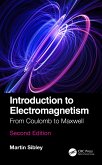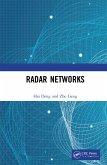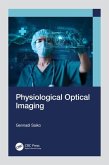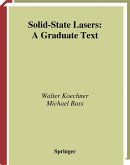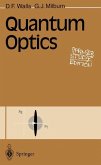- Gebundenes Buch
- Merkliste
- Auf die Merkliste
- Bewerten Bewerten
- Teilen
- Produkt teilen
- Produkterinnerung
- Produkterinnerung
Developments in and applications of laser spectroscopy and laser imaging are growing rapidly. This book is a concise collection of laser analysis and imaging techniques, providing a solid overview of the field.
Andere Kunden interessierten sich auch für
![Optical Frequency Combs Optical Frequency Combs]() Optical Frequency Combs270,99 €
Optical Frequency Combs270,99 €![Optical Methods for Managing the Diabetic Foot Optical Methods for Managing the Diabetic Foot]() Gennadi SaikoOptical Methods for Managing the Diabetic Foot137,99 €
Gennadi SaikoOptical Methods for Managing the Diabetic Foot137,99 €![Introduction to Electromagnetism Introduction to Electromagnetism]() Martin J N SibleyIntroduction to Electromagnetism157,99 €
Martin J N SibleyIntroduction to Electromagnetism157,99 €![Radar Networks Radar Networks]() Hai DengRadar Networks183,99 €
Hai DengRadar Networks183,99 €![Physiological Optical Imaging Physiological Optical Imaging]() Gennadi SaikoPhysiological Optical Imaging148,99 €
Gennadi SaikoPhysiological Optical Imaging148,99 €![Solid-State Lasers Solid-State Lasers]() Walter KoechnerSolid-State Lasers63,99 €
Walter KoechnerSolid-State Lasers63,99 €![Quantum Optics Quantum Optics]() D.F. WallsQuantum Optics114,99 €
D.F. WallsQuantum Optics114,99 €-
-
-
Developments in and applications of laser spectroscopy and laser imaging are growing rapidly. This book is a concise collection of laser analysis and imaging techniques, providing a solid overview of the field.
Hinweis: Dieser Artikel kann nur an eine deutsche Lieferadresse ausgeliefert werden.
Hinweis: Dieser Artikel kann nur an eine deutsche Lieferadresse ausgeliefert werden.
Produktdetails
- Produktdetails
- Verlag: CRC Press
- Seitenzahl: 722
- Erscheinungstermin: 7. Mai 2018
- Englisch
- Abmessung: 261mm x 207mm x 50mm
- Gewicht: 2453g
- ISBN-13: 9781466588226
- ISBN-10: 1466588225
- Artikelnr.: 51785868
- Herstellerkennzeichnung
- Libri GmbH
- Europaallee 1
- 36244 Bad Hersfeld
- gpsr@libri.de
- Verlag: CRC Press
- Seitenzahl: 722
- Erscheinungstermin: 7. Mai 2018
- Englisch
- Abmessung: 261mm x 207mm x 50mm
- Gewicht: 2453g
- ISBN-13: 9781466588226
- ISBN-10: 1466588225
- Artikelnr.: 51785868
- Herstellerkennzeichnung
- Libri GmbH
- Europaallee 1
- 36244 Bad Hersfeld
- gpsr@libri.de
Helmut H. Telle received his degrees in Physics from the University of Cologne, Germany, in 1972 (BSc), 1974 (MSc) and 1979 (PhD), respectively. He exploited his newly-gained experience in and passion for laser spectroscopy during an extensive postdoctoral research period, which found him expanding his horizons at universities and research institutions in Canada and France, at physics and chemistry departments. In 1984 he settled in Wales, United Kingdom, to embrace a career in teaching and research in laser physics at Swansea University. His research activities - both at Swansea and within the framework of numerous international collaborations - encompass a wide range of laser-spectroscopic techniques. These he used predominantly for trace detection of atomic and molecular species, and applied them to analytical problems in industry, biomedicine and the environment on the one hand, but also to various fundamental aspects in science on the other hand. After nearly 30 years in Wales, he relocated to Spain to join the Instituto Pluridisciplinar of Madrid's Universidad Complutense. Here he pursues new frontiers in laser spectroscopy of exotic species of interest to astroparticle physics and astronomy. Ángel González Ureña graduated in chemistry from the University of Granada (Spain) in 1968, and then obtained his PhD in Physical Chemistry at the Universidad Complutense de Madrid in 1972. During the period 1972-1974 he carried out postdoctoral research at the Universities of Madison (Wisconsin, USA) and Austin (Texas, USA), embracing reaction dynamics in molecular beams. On his return to Spain he took up the position of Associate Professor in Chemical Physics at the Universidad Complutense de Madrid, and was promoted to Full Professor in 1983. The focus of his research activities mainly was on gas-phase, cluster and surface reaction dynamics, mostly utilizing molecular beam and laser spectroscopic techniques. In said work he was one of the pioneers in measuring threshold energies in chemical reactivity when changing the translational and electronic energy of the reactants. In recent years his interests branched out into the application of laser technologies to Analytical Chemistry, Environmental Chemistry, Biology and Food Science. He is heading the Department of Molecular Beams and Lasers at the Instituto Pluridisciplinar, associated with Madrid's Universidad Complutense; for the first ten years of the institute's existence he also was its first director.
1. Introduction 2. The Interaction of Light with Matter 3. The Basics of
Lasers 4. Laser Sources Based on Gaseous, Liquid or Solid-State Active
Media 5. Laser Sources Based on Semiconductor Media and Non-Linear Optic
Phenomena 6. Common Spectroscopic and Imaging Detection Techniques 7.
Absorption Spectroscopy and its Implementation 8. Selected Applications of
Absorption Spectroscopy 9. Fluorescence Spectroscopy and its Implementation
10. Selected Applications of Laser-Induced Fluorescence Spectroscopy 11.
Raman Spectroscopy and its Implementation 12. Linear Raman Spectroscopy 13.
Enhancement Techniques in Raman Spectroscopy 14. Non-Linear Raman
Spectroscopy 15. Laser-Induced Breakdown Spectroscopy (Libs) 16. Laser
Ionization Techniques 17. Basic Concepts of Laser Imaging 18. Laser-Induced
Fluorescence Imaging 19. Raman Imaging and Microscopy 20. Diffuse Optical
Imaging 21. Imaging Based on Absorption and Ion Detection Methods
Lasers 4. Laser Sources Based on Gaseous, Liquid or Solid-State Active
Media 5. Laser Sources Based on Semiconductor Media and Non-Linear Optic
Phenomena 6. Common Spectroscopic and Imaging Detection Techniques 7.
Absorption Spectroscopy and its Implementation 8. Selected Applications of
Absorption Spectroscopy 9. Fluorescence Spectroscopy and its Implementation
10. Selected Applications of Laser-Induced Fluorescence Spectroscopy 11.
Raman Spectroscopy and its Implementation 12. Linear Raman Spectroscopy 13.
Enhancement Techniques in Raman Spectroscopy 14. Non-Linear Raman
Spectroscopy 15. Laser-Induced Breakdown Spectroscopy (Libs) 16. Laser
Ionization Techniques 17. Basic Concepts of Laser Imaging 18. Laser-Induced
Fluorescence Imaging 19. Raman Imaging and Microscopy 20. Diffuse Optical
Imaging 21. Imaging Based on Absorption and Ion Detection Methods
1. Introduction 2. The Interaction of Light with Matter 3. The Basics of
Lasers 4. Laser Sources Based on Gaseous, Liquid or Solid-State Active
Media 5. Laser Sources Based on Semiconductor Media and Non-Linear Optic
Phenomena 6. Common Spectroscopic and Imaging Detection Techniques 7.
Absorption Spectroscopy and its Implementation 8. Selected Applications of
Absorption Spectroscopy 9. Fluorescence Spectroscopy and its Implementation
10. Selected Applications of Laser-Induced Fluorescence Spectroscopy 11.
Raman Spectroscopy and its Implementation 12. Linear Raman Spectroscopy 13.
Enhancement Techniques in Raman Spectroscopy 14. Non-Linear Raman
Spectroscopy 15. Laser-Induced Breakdown Spectroscopy (Libs) 16. Laser
Ionization Techniques 17. Basic Concepts of Laser Imaging 18. Laser-Induced
Fluorescence Imaging 19. Raman Imaging and Microscopy 20. Diffuse Optical
Imaging 21. Imaging Based on Absorption and Ion Detection Methods
Lasers 4. Laser Sources Based on Gaseous, Liquid or Solid-State Active
Media 5. Laser Sources Based on Semiconductor Media and Non-Linear Optic
Phenomena 6. Common Spectroscopic and Imaging Detection Techniques 7.
Absorption Spectroscopy and its Implementation 8. Selected Applications of
Absorption Spectroscopy 9. Fluorescence Spectroscopy and its Implementation
10. Selected Applications of Laser-Induced Fluorescence Spectroscopy 11.
Raman Spectroscopy and its Implementation 12. Linear Raman Spectroscopy 13.
Enhancement Techniques in Raman Spectroscopy 14. Non-Linear Raman
Spectroscopy 15. Laser-Induced Breakdown Spectroscopy (Libs) 16. Laser
Ionization Techniques 17. Basic Concepts of Laser Imaging 18. Laser-Induced
Fluorescence Imaging 19. Raman Imaging and Microscopy 20. Diffuse Optical
Imaging 21. Imaging Based on Absorption and Ion Detection Methods

